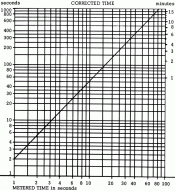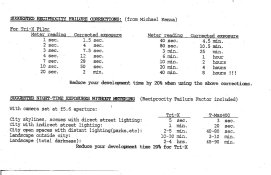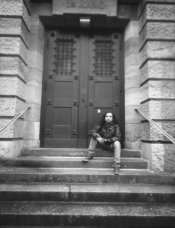Doremus Scudder
Member
I am actually using light meter but since the data sheet shows only up to 30sec, I will have to guess longer exposures anyway.
I find hard to understend.
Marcio,
Since you are using Delta 100, why not just try the times Bond suggests and not worry about figuring out the entire article in a foreign language.
Here they are:
100 Delta (times in seconds)
Indicated -- Give
1 --- 1
2 --- 2
4 --- 4.5
8 --- 9
15 --- 19
30 --- 41
60 --- 93
120 --- 230
240 --- 560
For longer times, you can extrapolate easily if you use graph paper and just extend the line upwards. If you can't do that, try the times below, which I got from an astronomy photography web site
10 min --- 30 min
20 min --- 1 hr 10 min
1 hr --- 3 hr
All of these times should be approximately valid for all Delta and T-Max films and can serve as starting points. For "conventional" films (Tri-X, FP-4 etc.), try multiplying the above times by 1.6 to find a starting point.
Best,
Doremus






